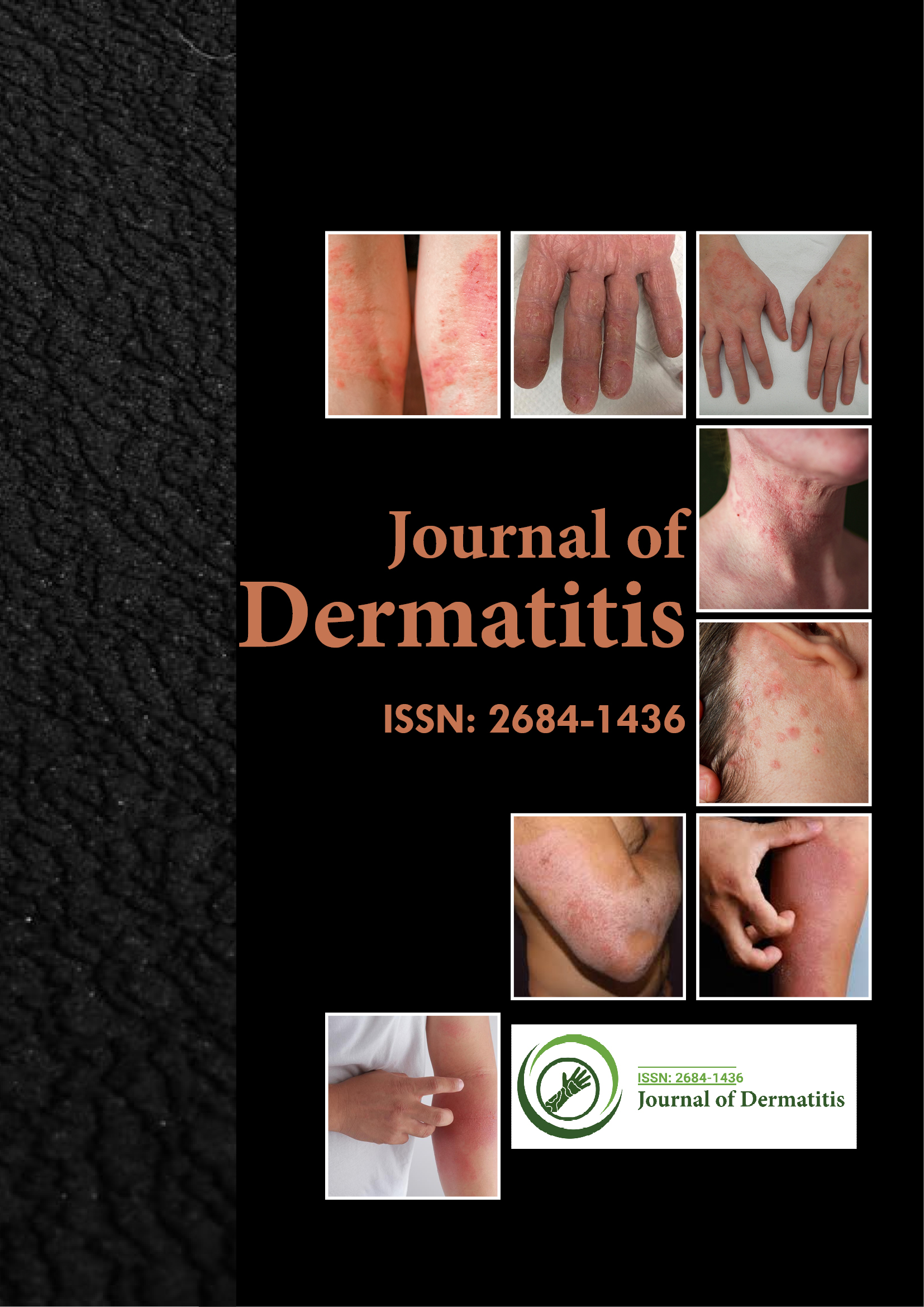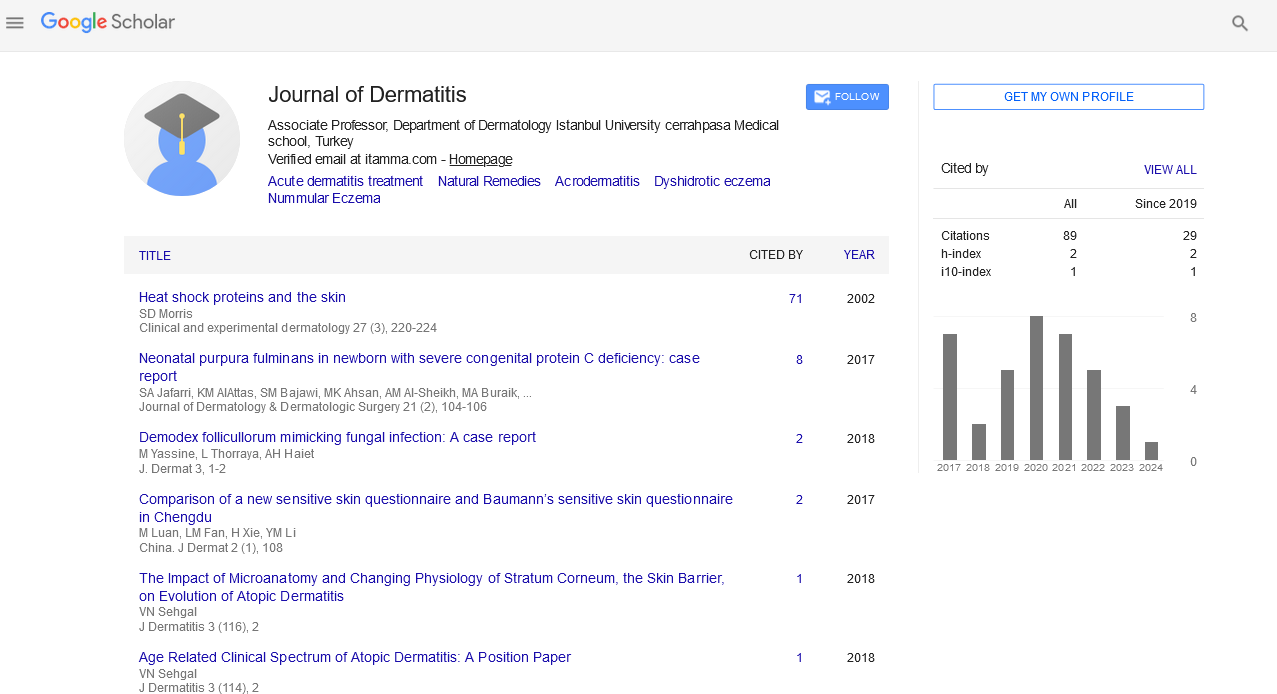Indexed In
- RefSeek
- Hamdard University
- EBSCO A-Z
- Euro Pub
- Google Scholar
Useful Links
Share This Page
Journal Flyer

Open Access Journals
- Agri and Aquaculture
- Biochemistry
- Bioinformatics & Systems Biology
- Business & Management
- Chemistry
- Clinical Sciences
- Engineering
- Food & Nutrition
- General Science
- Genetics & Molecular Biology
- Immunology & Microbiology
- Medical Sciences
- Neuroscience & Psychology
- Nursing & Health Care
- Pharmaceutical Sciences
Editorial - (2021) Volume 6, Issue 1
Nail Disease Discoloration
Nisse Jhonson*Received: 04-Jan-2021 Published: 25-Jan-2021, DOI: 10.35248/2684-1436.21.6.e107
Introduction
Skin diseases like psoriasis, eczema, lichen planus and lupus are the main cause of Nail disease. If you had psoriasis then it is very important to check your finger nails and toenails for signs of nail psoriasis. Common signs of psoriasis are yellow, brown or white discoloration, tiny dents in your nails, crumbling nails, nail separation from your finger or toe, blood under your nail. If you found any of these symptoms or any other problems related to nails it is very important to consult your dermatologist. Taking a proper treatment will help to clear nail psoriasis and will reduce the pain, without any proper treatment nail psoriasis may worsen and also it will develop disappearing of nails and it will affect people’s ability to use their hands or walking. Elderly people are a part of population that is rapidly growing. Nail diseases in elderly are common. We have to be familiar with these diseases in order to provide the best care for such population. In this presentation we will talk about the physiological changes that occur in aged nails then will discuss common nail disease in elderly. This includes Psoriasis, fungal nails infection, brittle nails, onychocryptosis, onychoclavus, onychogryphosis, and subungual hematoma or nail tumors. Fungal nail infection is a common disease of the fingernails and toenails which will cause nail to become discolored, thick, fragile and more likely to break or crack. Fungal nail infection is more common in toenails compared to fingernails. Fungal nail infection is also called as Onychomycosis.
This infection isn’t painful unless it becomes severe. The one who had fungal toenail infection also affect with skin infection on the foot in between the toes which often called as Athlete’s foot. Taking proper precautions can reduce the fungal nail infection-Keep your hands and feet dry and clean, Clip your fingernails and toenails short, do not walk barefoot in area like locker rooms and public showers, do not share nail clippers with anyone. Brittle nails mainly occur for variety of reasons, normal sign of aging polishing your nails too frequently. Weak nails are also signs of health issue like hypothyroidism or Anemia. There are two categories of brittle nails –dry brittle nails and soft brittle nails. Dry brittle nails are caused by too little moisture and are commonly caused by repeatedly washing and drying of fingernails. Soft brittle nails are caused by too much moisture and often caused by over exposure to house hold cleaners, detergents and nail polish remover. Also there are some other causes of brittle nails like Age, Iron deficiency, Hypothyroidism, Raynaud’s syndrome.
A nail tumor is found under the nail plate attached to nail bed or matrix. In most cases tumor growths of the nail bed are benign and malignant which affect the nail and causes a deformity and it is need to be removed surgically. It is often called as Subungual Melanoma. Symptoms include, Separation of the nails from nail bed, bleeding nails or splitting nails, changes in skin pigment (color changing or darkening around the affected nails), delay healing of nails lesions. Subungual hematoma is a bleeding or bruising under the nails, usually results in any kind of injury to blood vessels under the nail bed. Whenever a door slams on a finger or a heavy object crushes a toe, blood vessels can break or leak blood near the nail. Fingers and toes are protected by a tissue of finger nails and toe nails which are made up of hardened protein called Keratin and it also there in hair and skin. Overall health of human body depends on health of the nails. Healthy nails are often smooth and consistent in color. There are some specific types of nail discoloration and had changes in growth rate are signs of heart, kidney, lung and liver disease. Vertical ridges and white spots on the nails are harmless. Nail problems like bacterial and fungal infections, tumors, warts and ingrown nails sometimes require treatment.
Citation: Jhonson N (2021) Nail Disease Discoloration. J Dermatitis.6:e107.
Copyright: © 2021 Jhonson N. This is an open-access article distributed under the terms of the Creative Commons Attribution License, which permits unrestricted use, distribution, and reproduction in any medium, provided the original author and source are credited.

